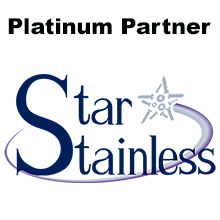Recent Developments and Guidelines for PPP Loans from the SBA
From the Center for Financial, Legal & Tax Planning, Inc.
Over the course of the first half of October, the SBA has released three new guidelines addressing some of the most frequently asked questions regarding PPP loans. For those of you that are unaware, PPP (Paycheck Protection Program) loans were provided to small businesses as a response to the economic losses due to COVID-related shutdowns. PPP borrowers can qualify to have the loans forgiven if the proceeds are used to pay certain eligible costs. On August 8, 2020, the program stopped accepting new applications even though almost $134 billion of congressionally approved funds remained unspent. Now, most businesses are focusing on applying for forgiveness, which is all but guaranteed so long as 60% of the forgiven amount was used for payroll purposes.
On October 5, 2020, the SBA announced new guidance that described the procedures requiring a change of ownership of an entity that has received PPP funds. The SBA procedural notice, which was addressed to SBA employers and PPP lenders, described when a change in ownership has occurred and the duties of a PPP borrower continue regardless of the ownership change. According to the notice, a “change of
ownership” occurs when one of the following is true:
- at least 20% of the common stock or ownership interest of a PPP borrower is sold or otherwise transferred;
- the PPP borrower sells or otherwise transfers at least 50% of its assets to be measured by fair market value; or
- PPP borrower is merged with another entity.
Notwithstanding any ownership change, the PPP borrower still remains responsible for performance of all obligations under the PPP loan, certifications associates with the PPP loan application, compliance with all PPP requirements, PPP documentation, and providing the required documentation to the SBA or lender upon request. The SBA must be notified within five (5) days of any transaction by the PPP lender. The lender is also required to continue submitting the monthly 1502 reports until the PPP loan is fully satisfied.
On October 7, 2020, the SBA released guidance clarifying the deferral period for PPP loan payments. Prior to the passage of Paycheck Protection Program Flexibility Act of 2020, the deferral period for PPP loan payments was set at 6 months. However, the Flexibility Act extended the deferral period for borrower payments of principal, interest, and fees on all PPP loans to the date that SBA remits the borrower’s loan forgiveness amount to the lender (or, if the borrower does not apply for loan forgiveness, 10 months after the end of the borrower’s loan forgiveness covered period). Under the updated guidance, PPP lenders are required to give immediate effect to the statutory extension and must notify all borrowers of the change.
On October 9, 2020, the SBA released an interim final rule (IFR) that provided almost instant relief for approximately 3.57 million businesses. If their PPP loan was for $50,000 or less, businesses are exempt from any reductions in forgiveness based on either: reductions in full-time equivalent employees or reductions in employee salaries or wages. Small businesses that fit in this category may apply for forgiveness using SBA Form 3508S. The new rule speeds up the forgiveness process for PPP borrowers of $50,000 or less because they will not be required to perform potentially complicated FTE or salary reduction calculations. Because most businesses would hire an outside source to do this work, they are now also more likely to save money on this portion as well. Borrowers of $50,000 or less will still have to make some certifications and provide documentation to the lender for payroll and nonpayroll costs.
On October 13, 2020, the SBA released guidance confirming that PPP loan forgiveness applications are not due on October 31, 2020. The program’s loan forgiveness forms denoted an expiration date of “10/31/20” in the upper-right corner. Over the course of the month, the SBA noticed a higher volume of calls with regards to frantic business owners concerned about the possibility of an October 31, 2020 closing date. As a result, the SBA released an updated answer to their frequently asked questions. In its explanation, the SBA points out that borrowers may submit a loan forgiveness application any time before the maturity date of the loan, which is either two or five years from the loan’s origination, depending on the borrower’s agreement. But the SBA also reminds borrowers that loan payments are deferred only until 10 months after the last day of each borrower’s loan forgiveness covered period. For example, the SBA wrote, a borrower with a covered period that ends Oct. 30, 2020, has until Aug. 30, 2021, to apply for forgiveness before loan repayment begins. The SBA placed the expiration date in the upper-right corner of the PPP loan forgiveness application forms to comply with the Paperwork Reduction Act. The date represents the temporary expiration date for approved use of the forms, the SBA said, adding that once a new expiration date is approved, it will be posted on the forms.
Guidance with regards to PPP loans seems to be rapidly changing. However, most if not all of these changes have been beneficial to small businesses that have been impacted by COVID-19. Conversations have recently sparked for another stimulus package for both individuals and businesses. Will it be another round of PPP loans for small businesses? Will it be a more general loan that allows more flexibility with regards
to how the funds are spent? Regardless of what a future stimulus package will look like, The Center for Financial, Legal, and Tax Planning will be in the loop to educate our clients.
If you have any further questions or would like our assistance in applying for PPP loan forgiveness, contact the tax planning professionals at The Center for Financial, Legal and Tax Planning online at www.taxplanning.com or call (618) 997-3436.


